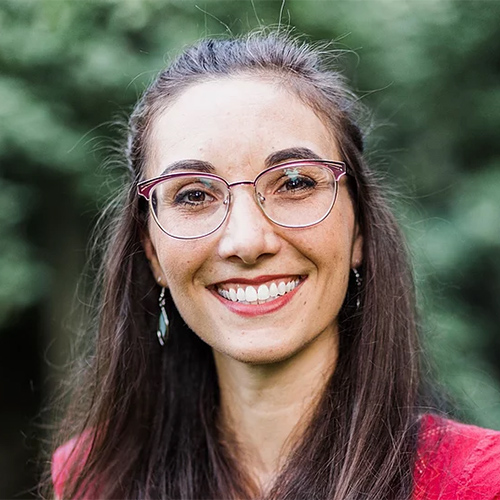The Rev. Dr. Shelly Wood sat alone in the sanctuary of Orchard Park Presbyterian on Easter morning, listening to the sermon she’d prerecorded for her congregation and imagining they were there with her.
It had been a month since COVID-19 had forced the Indianapolis church to do the unthinkable: close its doors to services. The church had never worshipped online before, and Wood scrambled that first Sunday to record a service on her iPhone and post it to YouTube. Surely, she thought then, we’ll be back in the sanctuary in two weeks.
When that didn’t happen, she set her sights on Easter. But Easter arrived and her congregation still could not safely worship together.
“Closing worship was like heresy,” she said. “I really went through -- I think we all did -- a dark time, a time of grieving and emptiness.”
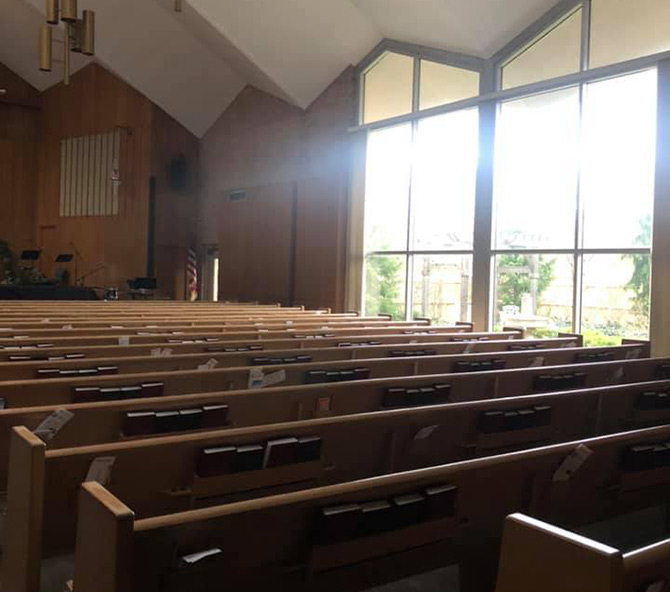
Wood said she was driving home after the solitary service when she heard a voice.
“I heard God say, ‘I’m with you. I’m with you in this,’” she said. “I came home and had a shift, from a feeling of desperation to a feeling of hope, a feeling of, ‘I’m with you in this new place, and we will keep going.’”
Unable to worship together, fretting about finances and reeling from the losses associated with the pandemic, any congregation would find it easy “to get stuck in their own story,” said David P. King, the Karen Lake Buttrey Director of Lake Institute on Faith & Giving.
But a recent survey of 555 faith communities conducted by the institute offers cause for optimism as well as a path forward for congregations wrestling with uncertainty. While not a representative sampling, the July 2020 survey provides a snapshot of how congregations are managing their finances, engaging with members and planning for the future, King said.
What have you noticed about your congregation’s giving during the pandemic? What has changed that’s worth paying attention to, and what has remained consistent that’s worth celebrating?
It’s a challenging time, to be sure, he said. But it’s also an opportunity for congregations to think creatively about revenue streams, to lean into their service-oriented missions and to celebrate what they have rather than despair over what they’ve lost.
“It’s not a death knell or a dismal story,” he said. “It’s an opportunity to focus on this new normal and, not wish for these pandemics, but move through them and be able to take stock of the new future of your congregation and demonstrate the resiliency of American congregations.”
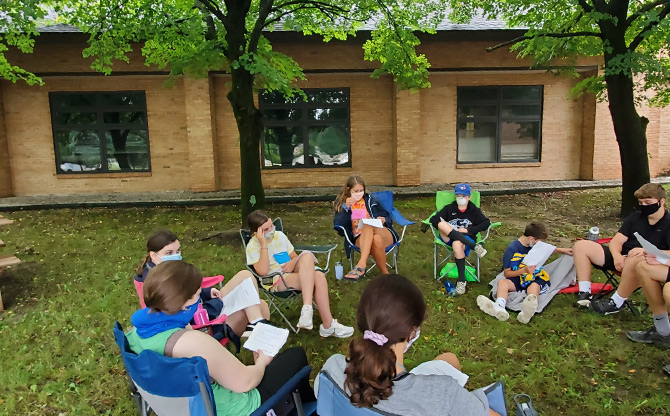
Last fall, Lake Institute, part of the Indiana University Lilly Family School of Philanthropy at IUPUI, released its National Study of Congregations’ Economic Practices. It examined how 1,231 U.S. congregations received, managed and spent their resources between 2014 and 2017.
That study, the largest nationally representative survey of congregational finances in a generation, determined that 81% of congregational funding comes from individual donations, with 78% of those given during worship services.
But nearly every congregation ceased in-person worship in March 2020, at least temporarily, which left Lake Institute wondering: What happens to giving when churches close their sanctuaries?
For 41% of respondents in the newest survey, that has meant a drop in financial giving. But King is quick to point out that that still means the majority of churches have been able to sustain (31%) or even increase (28%) member giving.
“It’s not all bad,” he said. “Sustaining giving in a time like a global pandemic is something to be proud of, even excited about.”
Overall, study participants reported that giving was down about 4.4% between February and June 2020 as compared with last year. Congregations that already had online giving options before COVID-19 tended to fare better.
Small congregations with attendance of fewer than 50 were least likely to have online giving options already in place, the study reported, and slightly more than half of those (54%) said they still did not. Meanwhile, nearly all congregations with 100 or more weekly worshippers (94%) now offer online giving, according to the study.
Concerned about the potential for decreased revenue, churches trimmed costs by reducing nonpersonnel administrative expenses (38%), delaying capital campaigns (11%) or building programs and repairs (16%), and cutting back on giving to religious associations (12%), the study found.
Only 14% reported salary reductions, layoffs or furloughs, and just 8% decreased missions, service or benevolence expenses. However, 30% of the survey’s respondents said they also financially supported other congregations or nonprofits in need, and 22% created special funds to support members in crisis.
Asked about their budget planning for next year, a majority of congregations (52%) reported plans to keep their budgets the same, while the rest anticipated cuts of 5% to 10%.
In the past, what assumptions has your congregation or institution made in its budgeting process? How has the pandemic challenged or confirmed those assumptions, and how is that shaping your budget planning for 2021?
Even during a pandemic, perhaps especially during a time like this, King said, he urges church leaders to share a message of abundance with their congregations. What do we have, he said, that could serve others?
“It’s not just the megachurches with ministers of technology and multiple cameras and angles. You can do a lot with a pastor at her kitchen table, Zooming off her iPhone. There are plenty of ways to make that connection if you think creatively and think of the abundance you have,” he said.
“The message is not, ‘We really need your money now’ but a reminder of the mission -- how you’re engaged in community and helping others now, being the light -- rather than, ‘You owe.’”
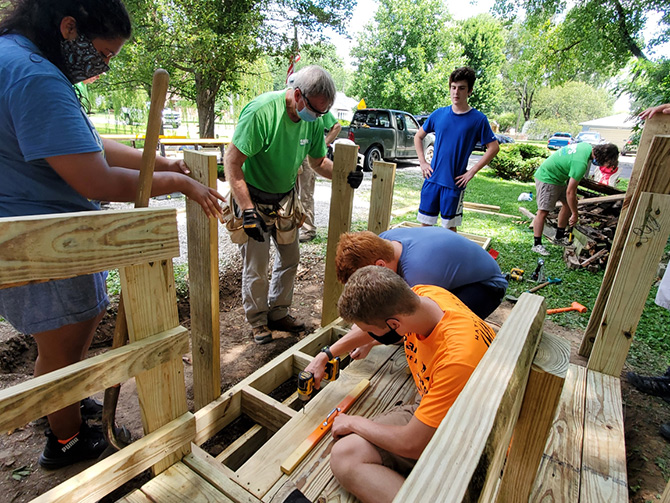
Money follows mission
Focusing on mission can keep members engaged financially and spiritually, said Phill Martin, the CEO of The Church Network, a professional association of church administrators based in Dallas. Martin said he’s urged churches to be upfront with their members about what funds are needed and how they’re being used.
“People tend to give to purpose,” Martin said. “What is the church doing in the midst of this that money is making possible?”
What have you learned about the economic realities of the lives of your members or constituents across these months? Have there been surprises that could shape future ministries?
That adage has held true for Broad Street Presbyterian Church in Columbus, Ohio, according to the Rev. Amy Miracle, the church’s senior pastor. The congregation of about 800 members sponsors three community-based missions: a food pantry, an eviction-prevention program and an academic achievement program for children, all in high demand right now.
An annual fundraising event for all three resulted in an “amazing” response from members, who were able to see right away the results of their giving, Miracle said. The church is hopeful that that generosity will extend to its annual pledge campaign, which begins soon, but the congregation isn’t focused on its bottom line right now, she said.
“Immediately, we made the decision to have clarity about our mission, to just not worry about the money, knowing it was the right thing to do,” she said. “If we keep laser-focused on who we are during this situation, the financial support will follow -- or it won’t. Either way, we’ll be faithful.”
The response at Orchard Park was similar. Not long after Wood’s Easter revelation, the church’s session, its governing body, held a meeting, stripping the agenda of anything not pandemic related.
“We said, ‘When this is over, what kind of congregation do we want to be? What do we want to say we have done? Who are we, and who are we not?’” Wood said.
The group boiled their answers down to a list of four priorities: serving the community, supporting members by staying connected, pursuing social justice, and maintaining the essentials of Christian formation, like worship, Bible study and children’s ministries. Instead of going on a mission trip this summer, members built wheelchair ramps throughout their community. The church also collaborated with several other congregations, raising $20,000 for meals and gift cards for vulnerable children.
Church leaders quickly began making contact with every one of Orchard Park’s 700 members. Deacons, elders and staff have each taken responsibility for small groups of five to 10, regularly checking in to offer support, Wood said.
The Rev. Dr. Reggie Blount, the senior pastor at Arnett Chapel African Methodist Episcopal Church in Chicago, said he’s grateful that his congregation is “holding on” more than six months into the pandemic. While members mail in and drop off donations, many also use the congregation’s online giving option, which existed before COVID-19.
Blount estimates that giving is about 85% to 90% of what it was pre-pandemic, though he noted that the number of donors has dropped to about 60%. While that creates some financial pressure for the church, Blount said his primary concern is what’s going on in the lives of those former donors. Have they lost jobs or become ill? Are they feeling disconnected? He said he has encouraged his congregation to “find ways to touch without touching” by calling, writing and otherwise checking in with each other.
“The biggest thing right now is connection. This is a period of trauma and a lot of uncertainty and not knowing what voices to trust out there, because there are a lot of mixed messages -- not that anybody has any clear answers. But it doesn’t help when people feel isolated,” said Blount, who is also an associate professor of formation, leadership and culture at Garrett-Evangelical Theological Seminary in Evanston, Illinois. “This is truly the time to emphasize pastoral care.”
The pandemic has underscored and deepened significant economic injustices in American society. How is your congregation or institution responding to those injustices during this time?
When churches care for their congregations in times of crisis, those congregations are better equipped to turn around and care for their communities, he said. Arnett Chapel, which has about 150 members, partnered with the Greater Chicago Food Depository this summer, providing dozens of volunteers at a food distribution site that served roughly 300 families a week for 12 weeks.
“If that’s not the purpose and role of the church, what is it? If we’re not there to help protect the needs of the least of these no matter what we’re going through, we’re no different than any other organization,” Blount said.

Like 66% of the survey’s participants, Arnett Chapel applied for the federal Paycheck Protection Program. Larger congregations applied at four times the rate of smaller ones, probably because they had more administrative capacity to fill out all the paperwork and “be first in line when the banks opened,” said King.
When a large bank proved unhelpful to Arnett Chapel, the church received guidance from a local nonprofit in applying for the funds, which preserved the salaries of its office manager and musician, Blount said.
While providing encouragement to his congregation, Blount said he’s also been honest with them, “because I’m experiencing too many folks wanting to get back to normal, and normal isn’t coming back.”
“How do we grieve what used to be and prepare ourselves to embrace what the new realities are going to be?” he said. “We can’t just go back to our old rhythms once everyone is vaccinated. We’ll be leaning into new rhythms by then.”
Embracing creative engagement
Despite shuttered sanctuaries, slightly more than half (52%) of those who responded to Lake Institute’s survey reported that participation in worship services had increased compared with previous in-person attendance.
Roughly one-third (35%) reported a decrease in participation. While only 31% of the surveyed congregations provided online worship opportunities pre-pandemic, 86% reported offering them now.
The Lake Institute survey results provide an opportunity to have a conversation with your leadership team about organizational or congregational economics. What preparatory work do you need to do as a leader to make that conversation beneficial?
Broad Street has developed a slate of creative ways to engage safely with members, Miracle said, including hosting small concerts in the church parking lot, arranging for backyard home visits between staff and members, and establishing a popular Sunday morning hiking group that includes prayer, meditation and a chance to exercise outside. Seniors and high school students hungry for in-person contact have participated in record numbers, Miracle said.
In March, the church committed to responding to the crisis with “flexibility, creativity and generosity,” a phrase Miracle still has posted above her desk. While the congregation had always been generous, it wasn’t as flexible and creative as it aspired to be, she said. COVID-19 has changed that.
“It’s amazing how quickly even a church can change when it has no other choice,” she said.
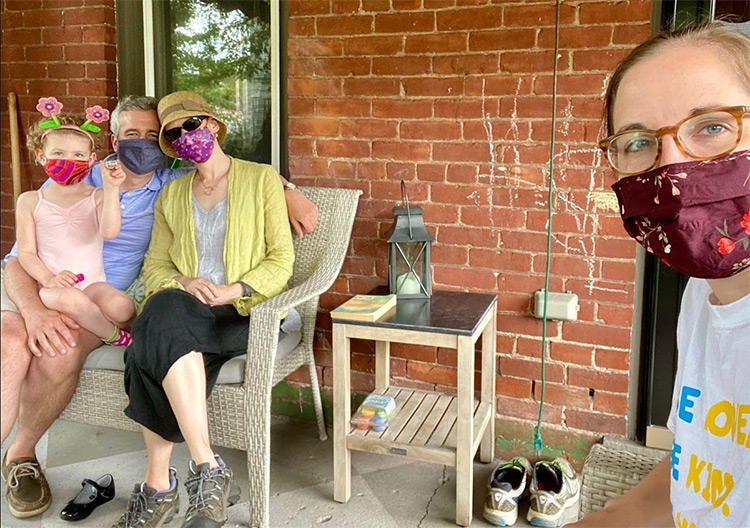
In Indiana, a grant from the Center for Congregations enabled Orchard Park to purchase cameras and improved lighting for the sanctuary so Wood no longer had to rely on her iPhone to record virtual services, thus upping their online presence.
But Wood noted “it’s the little things” that have meant so much to members as they imagine new ways to share sacred traditions and devote considerable effort to being a light in their community. The church offers drive-thru communion, for instance, and used one of those events as an opportunity to continue its tradition of handing out Bibles to its third graders.
And though Indianapolis was essentially shut down, the church got permission from the mayor to organize a Palm Sunday parade, with members driving around town waving palms they’d picked up in the church’s parking lot. Members had so much fun that they suggested the parade become an annual tradition.
Five members of Orchard Park’s session formed a task force that spent months examining CDC guidelines before agreeing to open the church’s sanctuary in July under strict conditions, Wood said.
Everyone must be masked and use hand sanitizer before being escorted into (and out of) the sanctuary, where they sit 6 feet apart, every other pew, she said. No one exchanges hymnals or Bibles anymore, and when they’re asked to pass the peace, worshippers stand up and wave at each other or greet one another in sign language.
“The first time we can actually pass the peace of Christ and hug each other, I’m going to be a mess,” she said.
Still, Wood said, online participation remains strong, and the church intends to continue offering that service. The largest in-person Sunday attendance so far has been about 100 people, far below the 400-person average before the pandemic. The task force allowed the church’s preschool and pre-K programs to open once school started in Indiana, but it has already decreed that there won’t be any more opening up until 2021, she said.
Whether to reopen and when was one of the biggest decisions facing churches that participated in Lake Institute’s survey -- one that appeared to be driven more by finances and political orientation than health factors, according to the study.
While 71% of the congregations that identified themselves as conservative indicated they had already reopened or intended to reopen by August, only 20% of liberal congregations reported the same. Among moderates, 49% had reopened by August. Churches with endowments or reserves generally opened later than churches that didn’t have those funds to rely on, the study reported.
Wood described her own congregation as an “incredibly purple church” and said politics never entered into its decision to reopen for worship. Rather, she said, it was “a really faithful decision” made by elected members of the congregation.
Thinking back to the start of the pandemic, when she hoped for no more than a two-week disruption, Wood said she’d had no idea how much change was coming. The fact that the lectionary is focused on the story of Exodus right now is “so perfect,” she said.
“They started to complain about manna, and they had no idea how far they still had to go,” she said. “The humanity of trusting God in the wilderness is a very real thing.”
Lessons from the pandemic
The pandemic has presented significant challenges to congregations, many of which remain closed for in-person worship. But faith leaders say it has offered valuable lessons as well that will continue to serve them long after this crisis passes.
- While it’s important to reach out to other congregations and nonprofits for support and suggestions, avoid comparing your church’s response with that of others, which can cause anxiety, said the Rev. Amy Miracle of Broad Street Presbyterian in Columbus, Ohio. Instead, lean into your own congregation’s culture and let that inform the steps you take.
- Pace yourself, said the Rev. Dr. Shelly Wood of Orchard Park Presbyterian in Indianapolis. Early on, a friend advised her that the pandemic would play out more like a marathon than a sprint. “I heard that and felt that, but I also felt so much urgency and fear and responsibility that I couldn’t not be overwhelmed and feel a sense of, ‘If I work really, really hard, maybe everything will be OK,’” she said. “Now, I look back and think, ‘Well, that was really naive of me.’”
- Staying with the race analogy, The Church Network CEO Phill Martin noted that church leaders and staff have been “in a full sprint” since March, trying to respond to the needs of their communities, and fatigue has set in. Give yourself permission to name the problem, he said, and set some boundaries that give you the “space and grace” you need to recover.
- Maintain connections with congregants and keep your mission at the forefront, advised the Rev. Dr. Reggie Blount, the senior pastor at Arnett Chapel AME in Chicago. “What can increase giving is being able to demonstrate that you’re still serving,” he said. “People give to mission.”
- Both Blount and Martin pointed out that this is a good time to take stock of your assets, including shuttered facilities. Is all that square footage still necessary to continue the church’s mission? Or might it be put to alternative use post-pandemic?
- Rather than getting mired down in fear and anxiety, think about what you want your faith community to look like as it moves through this crisis and what you want it to be on the other side, said David P. King, the Karen Lake Buttrey Director of Lake Institute on Faith & Giving. “Take time to grieve what’s been lost, the loss of community, the loss of life,” he said, “and then pick yourself back up as an organization and take these next steps.”
Questions to consider
Questions to consider
- What have you noticed about your congregation’s giving during the pandemic? What has changed that’s worth paying attention to, and what has remained consistent that’s worth celebrating?
- In the past, what assumptions has your congregation or institution made in its budgeting process? How has the pandemic challenged or confirmed those assumptions, and how is that shaping your budget planning for 2021?
- What have you learned about the economic realities of the lives of your members or constituents across these months? Have there been surprises that could shape future ministries?
- The pandemic has underscored and deepened significant economic injustices in American society. How is your congregation or institution responding to those injustices during this time?
- The Lake Institute survey results provide an opportunity to have a conversation with your leadership team about organizational or congregational economics. What preparatory work do you need to do as a leader to make that conversation beneficial?








